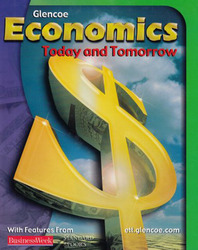1 A) a governing board, 12 district banks, and 25 branch banks. B) a governing board and the 12 district banks. C) 12 district banks and 25 branches. D) 12 district banks, 25 branches, and 5,000 member banks. 2 A) is appointed by the Senate to serve for two-year terms. B) is elected by voters in the state in which they live. C) risks not being reelected because of unpopular decisions. D) is appointed by the president with approval by the Senate for a 14-year term. 3 A) Board of Governors. B) Federal Advisory Council (FAC). C) Federal Open Market Committee (FOMC). D) Senate. 4 A) serving as the government's banker. B) processing checks. C) ending the periodic financial panics. D) regulating the nation's money supply. 5 A) consumers buy more. B) consumers buy less. C) credit is inexpensive and abundant. D) businesses expand. 6 A) businesses postpone expansion. B) unemployment increases. C) more people are employed. D) consumers save more. 7 A) banks hold a certain percentage of their total deposits in Fed district banks. B) banks hold a certain percentage of their total deposits as cash in their vaults. C) banks must lend a certain percentage of their total deposits. D) banks hold a certain percentage of their total deposits either as cash in their vaults or in Fed district banks. 8 A) strike a balance between tight and loose money. B) provide for new money. C) ensure that there are enough cash reserves in the bank to provide for large cash withdrawals from checking accounts. D) provide for tight money policy. 9 A) the multiple expansion of the money supply. B) the monetary policy. C) a tight money policy. D) a loose money policy. 10 A) To raise the reserve requirements, a bank can call in some loans, sell off securities and investments, or borrow from another bank or the Federal Reserve. B) Increasing the reserve requirement decreases the amount of money in the economy. C) Even small changes in the reserve requirement can have major effects on the money supply. D) To control the money supply, the Fed has most often used adjustments to the reserve requirement. 11 A) discourage borrowing. B) increase the money supply. C) pass on its increased costs to its customers. D) encourage borrowing. 12 A) Individual investors conduct most open-market transactions. B) When the Fed sells securities, banks have more money to lend. C) When the Fed buys securities, it decreases the money supply. D) Buying and selling government securities, or open-market operations, is the major tool used by the Fed to control the money supply. 13 A) encouraging the use of credit cards. B) selling government securities such as Treasury bills. C) buying government securities such as Treasury bills. D) borrowing money from member banks. 14 A) the increased use of electronic funds transfer. B) the increase in the use of credit cards. C) new savings and investment opportunities. D) changes in the consumer price index.





